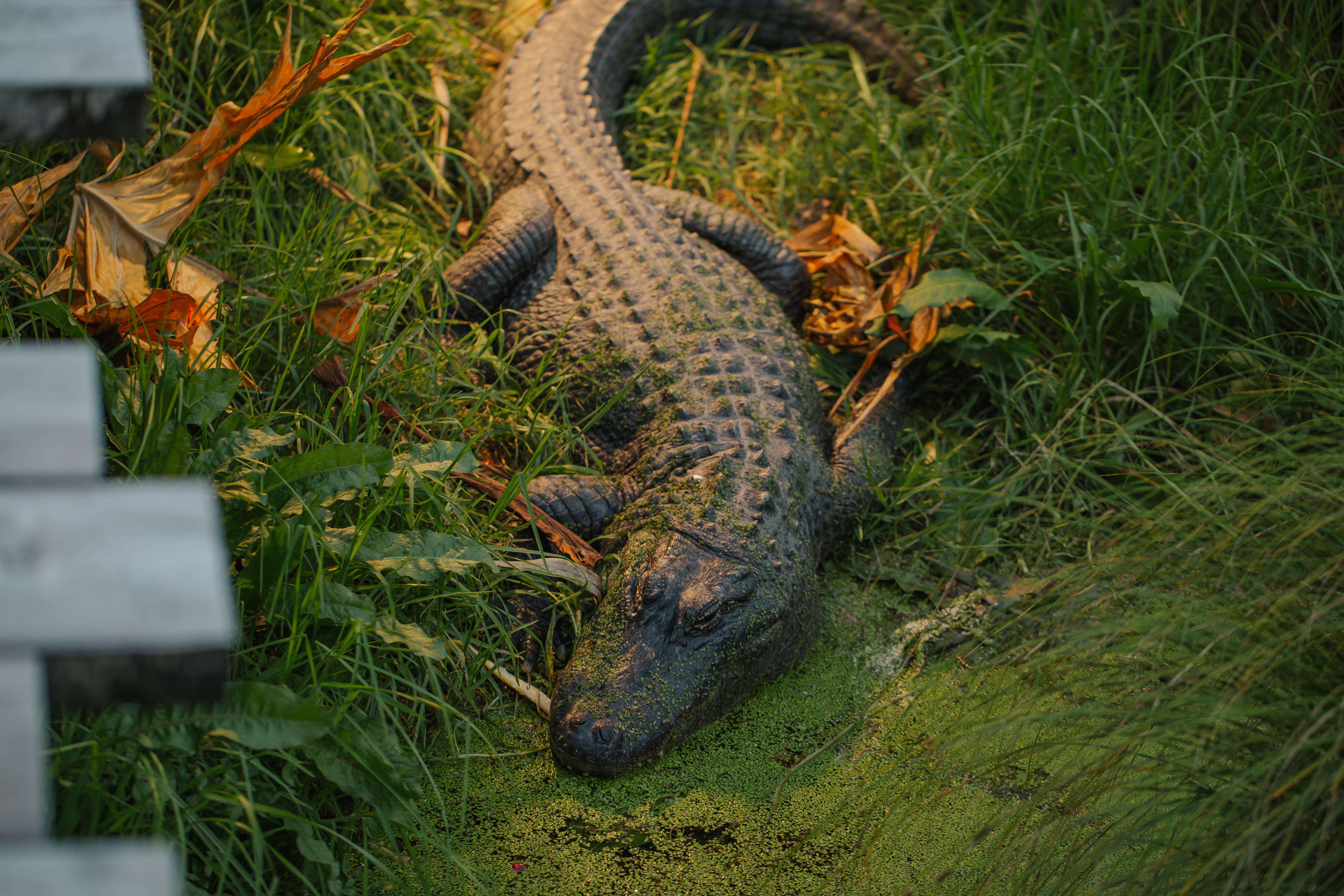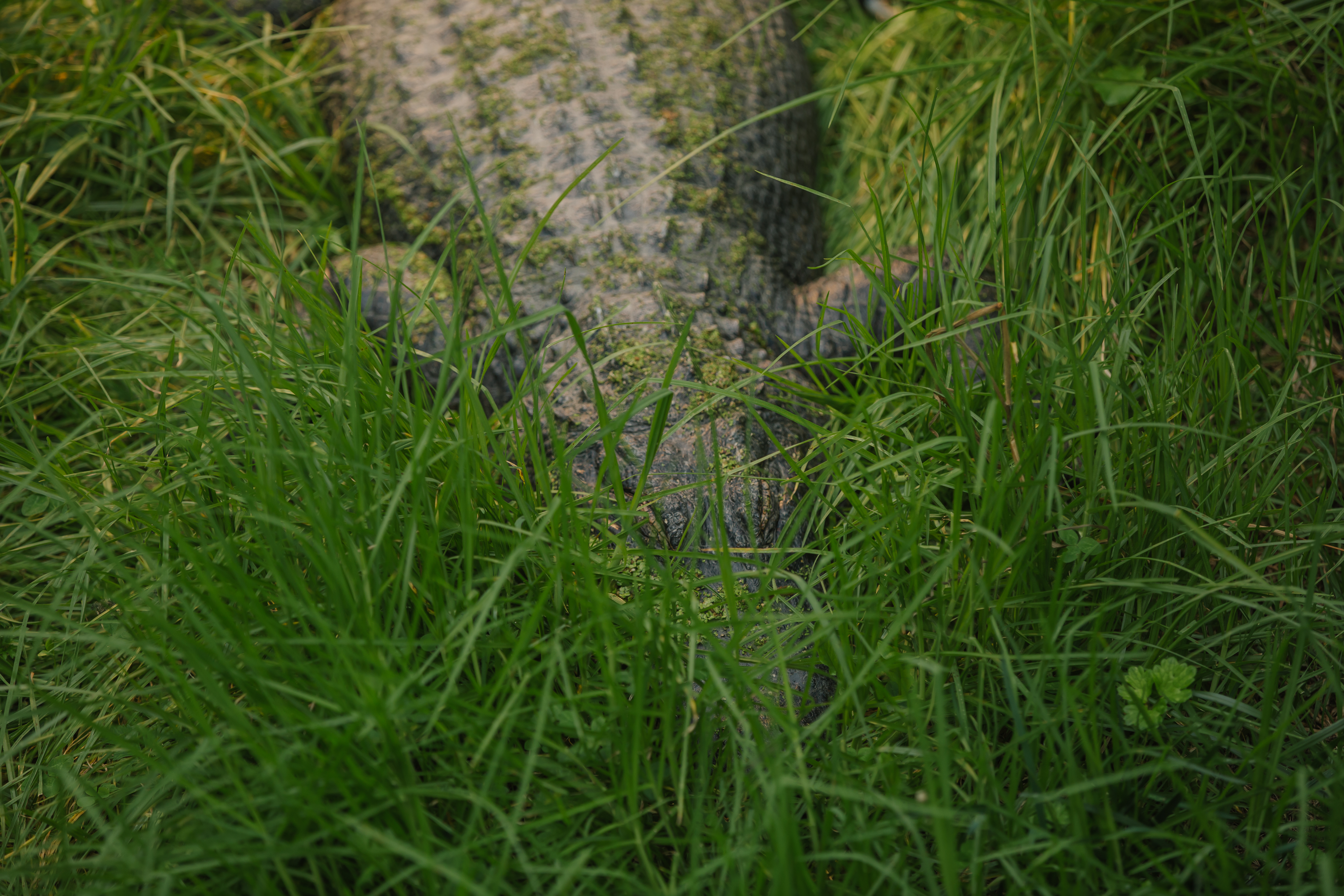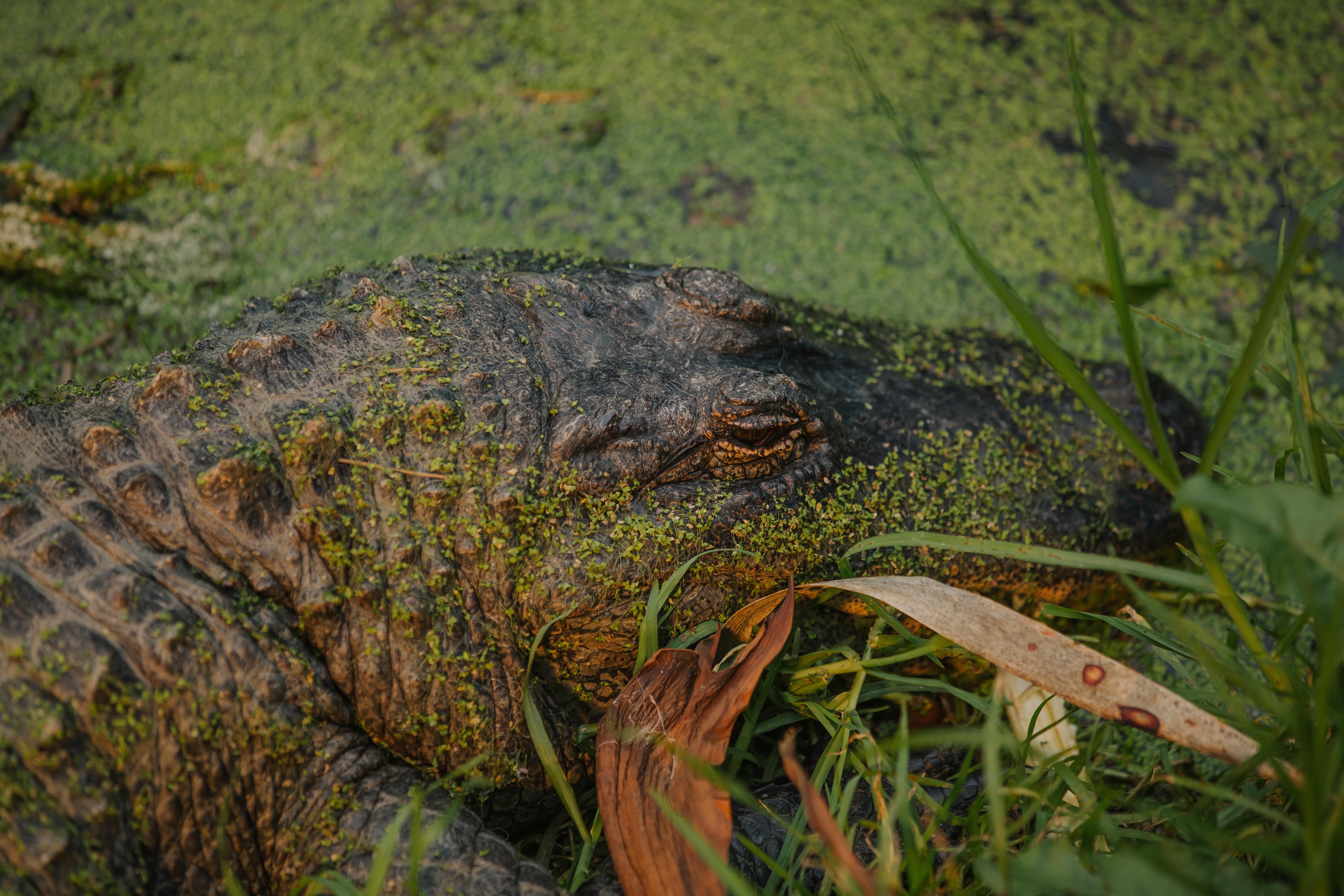My, what a lot of teeth you have!
All the better to hold and shake my prey with!
Alligators are ambush predators, they wait hidden in the water for an animal to get close to the water's edge, before they lunge towards the unsuspecting prey.
Once an alligator catches its prey in its mouth, it holds on so tight and may shake its head so hard to subdue its meal that it may lose a few teeth. But not to worry, they have up to 80 teeth in their mouth at any one time, and can have up to 3,000 teeth throughout their lifetime!
Scientists have measured the bite force of an alligator when clamping its mouth shut. The strongest bite measured had a force of more than 9,000 newtons. That’s the same as having 900kg on top of you; the same as three adult zebra or two grand pianos! With a bite force like this, it is not unusual for alligators to have a few fractured teeth in their mouth before shedding and replacing them.
Despite being able to clamp their mouth shut with such huge force, alligators don’t have very strong muscles to open their mouths. This is why humans can hold an alligator's jaws shut with their hands if they need to restrain them.







